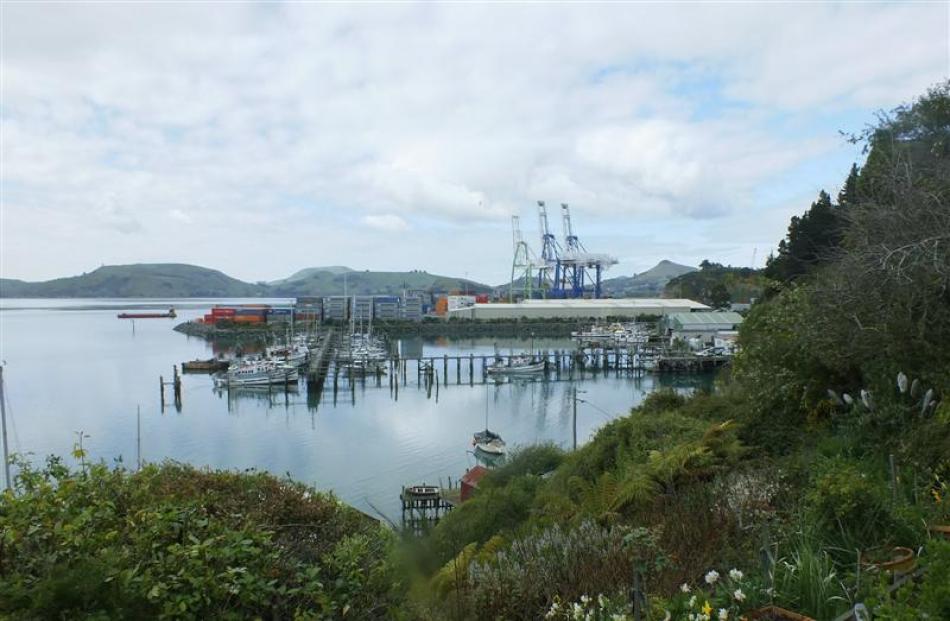A Carey's Bay garden is full of history but the current residents have also made it their own, writes Gillian Vine.
Hau Tai (''place of wind and sea''), the Carey's Bay home of former Dunedin city councillor Paul Hudson and his wife, Sheryl Spiers, has a fascinating history.
Built in the 1860s, it belonged to Captain William Goldie (1832-1910), who owned barges and lighters that carried cargo between Port Chalmers and Dunedin.
The ribs of old vessels on the beach below the house are a reminder of the days when Carey's Bay was called Mansford Town, important for shipping - ''There are two creeks from which they lugged water for ships,'' Paul says - and the site of a Chinese tent settlement. The first school in the area was just behind the house and, as was common at the time, English trees were planted on the site.
A large chestnut, now within the Hudson garden, was probably planted by the school in the 1860s.
Old images show it was not there in 1850 but photos taken 20 years later record the tree.
A Norfolk pine is about the same age as the chestnut and both are listed on Dunedin's register of significant trees.
Other trees have been added over the years.
In 1973, when Paul bought the house on its 0.4ha site, his father, Bob, planted a conifer, now a fine specimen.
Nearby is a weeping flowering cherry to commemorate Paul's mother, Nan, who died five years ago.
Those who knew Mrs Hudson would agree that the elegant little tree with delicate pink flowers is a very appropriate memorial.
Magnolias have been chosen for successive flowering, while silver birches along the drive have at their feet masses of daffodils, irises and other spring bulbs, interwoven with little heartsease pansies.
Look up when the birch branches are bare to see a hanging metal sculpture at its best.
Before the daffodils get into their stride, some of the early colour in the garden comes from a deep pink Pieris, which flowers for three months.
It was ''amazing'' this year despite the hard winter.
''We very seldom have frost but this year have had four frosts,'' Paul says.
Irises give later spring colour, then tree paeonies in yellow, pink and reddish apricot take top billing.
The garden is on several levels. In a dell at the lowest point are native trees and shrubs.
This natural-looking bush patch includes several large tree ferns moved 40 years ago from alongside the house to this more suitable shady streamside site.
They are complemented by rhododendrons, more of which are skilfully sited up a slope to link to their relatives, a row of small-leafed michaelias planted against a retaining wall.
As well as screening the timber, the shrubs' ivory flowers are sweetly perfumed.
Paul's appreciation of rhododendrons saw him involved in early planting work at the Lady Thorn Dell in Port Chalmers.
He was ''assisted'' by a dog.
''Wherever the dog dug a hole, we planted a rhododendron,'' he recalls.
A rather special rhododendron near the front entrance to Hau Tai is a September Snow, a small, white-flowered hybrid (Rhododendron edgeworthii x R. leucaspis) raised by the late Bruce Campbell, of Dunedin, whom Paul knew well.
September Snow is perfumed, one of many scented plants in the garden.
Roses are ''perfumed wherever possible'' and every year sweet peas are grown near the house.
Then there is old-fashioned mignonette.
''It's beautiful and brings the bees. We always look for things to bring the bees,'' Paul says.
''And we grow lots of rosemary and comfrey, as we try to keep bringing the bees.''
The prostrate rosemary has some surprising fans, the couple's two young Labradors.
''Our pups are vegetarians, it seems, as they `trim' the rosemary and eat it,'' Paul says.
There was a lawn but 30 years ago, the house was extended towards the sea to take greater advantage of the exceptional vistas and although the steep bank above the main road is thickly planted, the choices are low enough not to block the views.
Kereru are attracted here by the tree lucerne, while tui, bellbirds and other small birds are frequent visitors, although what they make of the ostrich sculptures by the bird feeder is a mystery.
What could have been a hilly nightmare has been turned into a dream garden and it will be open on Saturday, October 31, for the West Harbour Garden Trail.
See it
The Hudson garden is one of seven that will be open for the West Harbour Garden Trail on Saturday, October 31.
Gardens are open from 11am to 4.30pm and tickets ($12, including Devonshire tea) will be on sale from 10am at Emmanuel Church hall, Station Rd, Sawyers Bay. There will be plant and cake stalls at the hall, where a barbecue will run from 11am until 2pm. For advance tickets, phone Shirley 471-0690 or Sandra 471-0705.











